#Moisture Analyzer Manufacturer
Explore tagged Tumblr posts
Text
In-Depth Analysis: Moisture Analyzer Manufacturers in India
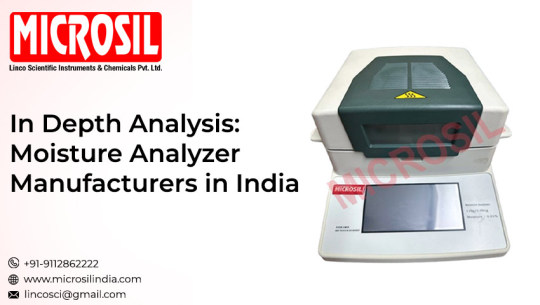
Looking for reliable Moisture Analyzer in India? Microsil India is top Moisture Analyzer Manufacturers in India. that are utilised in colleges, universities, and other educational institutions worldwide. Trust us for all your moisture analysis needs. Contact us today!
#Moisture Analyzer Manufacturer#Moisture Analyzer#top Moisture Analyzer Manufacturers in India#Scientific Instruments Manufacturers#Scientific Instruments Suppliers#Laboratory Equipment Manufacturers#Laboratory Equipment Suppliers
0 notes
Text
Common Faults in Switchgear Systems and How to Fix Them

Low voltage switchgear plays a crucial role in protecting electrical circuits and ensuring the safe distribution of electricity in commercial, residential, and industrial environments. However, like any electrical equipment, switchgear systems can develop faults over time, leading to power disruptions, equipment damage, or even fire hazards.
In this article, we’ll explore the most common issues in low voltage switchgear, their possible causes, how to fix them, and preventive maintenance tips to ensure smooth operation.
1. Overheating of Switchgear Components
Cause:
Loose electrical connections
Overloaded circuits
Poor ventilation
Aging components
Solution:
Tighten all connections using a torque wrench
Redistribute electrical load or upgrade to a higher-rated switchgear
Improve cooling/ventilation in the switchgear room
Replace old or worn-out components
Prevention:
Conduct regular thermal imaging inspections
Maintain optimal room temperature and airflow
Schedule periodic tightening of connections
2. Tripping of Circuit Breakers
Cause:
Short circuits or ground faults
Overload conditions
Defective breakers
Solution:
Identify the fault using an insulation resistance tester or breaker analyzer
Remove the cause of the overload
Replace or service the faulty circuit breaker
Prevention:
Use the correct size and type of breaker for each circuit
Monitor electrical loads regularly
Perform periodic breaker testing and calibration
3. Arcing or Flashovers
Cause:
Dust, moisture, or contamination inside the switchgear
Damaged insulation
Improper clearances
Solution:
Clean and dry the internal components
Replace or re-insulate affected parts
Ensure proper spacing and clearance between conductors
Prevention:
Maintain a clean and dry switchgear enclosure
Conduct insulation resistance testing periodically
Use arc flash protection gear and systems
4. Failure of Control Circuits
Cause:
Blown fuses
Broken control wiring
Faulty relays or timers
Solution:
Test and replace blown fuses
Inspect and reconnect or replace broken wires
Check relays, timers, and contactors for functionality
Prevention:
Use quality wiring and connectors
Implement surge protection devices
Conduct routine functional tests on control circuits
5. Mechanical Wear and Tear
Cause:
Frequent switching operations
Poor lubrication
Old mechanical components
Solution:
Replace worn-out mechanical parts (e.g., springs, latches)
Lubricate moving parts as per manufacturer���s guidelines
Retrofit old switchgear with modern alternatives
Prevention:
Schedule mechanical maintenance regularly
Monitor switching frequency and upgrade equipment if needed
Final Thoughts
Low voltage switchgear is the backbone of your electrical infrastructure. Regular maintenance, proper installation, and early detection of faults are key to ensuring safety and efficiency.
Quick Maintenance Checklist:
Thermal imaging checks
Insulation resistance testing
Breaker calibration
Visual inspection for dust/moisture
Cleaning and lubrication
By understanding common faults and how to address them, you can reduce downtime, improve safety, and extend the life of your low voltage switchgear system.
5 notes
·
View notes
Text
"WHO IS SHE?"
And here it is, another fic with Will! (I'm obsessed lol)
I hope you like it!


When Will arrived at the crime scene that day, he expected to find Jack and the rest of the investigators, just as he always did.
But this time, there was someone next to Crawford, someone he didn't recognize.
He walked over to where they were, and as soon as Jack saw him approaching, he nodded toward the bodies lying on the grass in the woods where they'd been found.
-Good morning -he said sarcastically- A couple of hunters found you this morning while you were out on your daily route -he explained- They got quite a scare. We sent you home after taking your statements
Will nodded slowly, his gaze shifting between Jack and the stranger, who pretended it had nothing to do with her.
He went over to the forensic experts and began asking them questions about the circumstances under which the bodies had been found, at which point Graham took the opportunity to speak to Crawford.
-Who is it? -Will asked bluntly- The other man gave him a sideways glance- She's the new assistant investigator -he said- We brought her in to help you solve the cases. You know I don't need anyone's help- he complained- I can do it on my own, like I've been doing up until now -he muttered- You've hired me a babysitter -he muttered, flashing a sarcastic smile-
-I know you don't want to hear this because that would mean it's real, but if you don't say it, I will -Jack blurted out- You're unstable, Will- he explained- The other day when you had an episode, you contaminated the crime scene -he reminded him- You've never done that before
-The only person who understands how my mind works is Dr. Lecter-he said, holding his gaze firmly- Don't act like a psychologist with me, Jack, because we both know you're not
-We don't have time for this -he said, nodding at the bodies- People have died, Will, and whatever our differences are, we have to put them aside to resolve this case -He frowned- Did I make myself clear?
-Crystal clear -Will replied expressionlessly before approaching the crime scene-
She looked up when she saw him stand beside her. She nodded toward the bodies.
-Forensic experts say they'd been underwater for more than twenty days
-That's impossible -he dismissed- The human body tends to rise to the surface two or three days after the crime -He observed them carefully- The fact that these didn't indicate that the killer put something in their bodies, either orally or intravenously, to prevent them from doing so
-Why would he want to do that?
-He wanted us to find them today
-Why?
-I don't know -he muttered, looking at her out of the corner of his eye- Do you always ask so many questions?
-I'm a researcher -she reminded him- It's my job -she murmured, returning her gaze to the scene- Whether a body floats or sinks depends on the relative values of weight and buoyancy. Since both depend on the respective densities of the body and the fluid, if the object is denser than the fluid, it will sink, and if it's less dense, it will float -she explained- We would first have to determine the weight of each to begin to draw accurate conclusions
At that moment, Beverly arrived with a sample she had just analyzed in the truck that was acting as a portable laboratory.
-Will is right -she announced, getting him to give her his full attention- The assistant researcher crossed her arms and nodded in Beverly's direction, asking her to explain -The killer used a phenolic resin, commonly known as formaldehyde -she began- These types of resins are stable in high-temperature environments, possess considerable strength, and are highly resistant to impacts, corrosion from contact with chemicals, and moisture. It's normally used in the manufacture of rubber resins, electrical components, laminating processes, for making molds and brake linings, and for adhesives for cement and agglomerates.
-Don't be offended -the researcher said- but are you sure the element you found is 100% that one?
-Why do you say that? -Beverly asked, looking as if she wanted to chop his head off with an axe-
-Because phenolic resins, specifically formaldehyde, are in solid form -she said- so it's not possible he could have used it to murder these people
-He melted it -Will intervened- He used a special blowtorch -he said, one that reached the maximum unit of Kelvin, which, if I'm not mistaken, is 10,000K -He looked at Beverly for confirmation. She nodded in response- Then she inserted an IV and gave them the resin intravenously -She pointed at the bodies- That’s why the skin has that color somewhere between yellow and brown -she explained- After being exposed to the resin for so long, the skin began to rot, giving it that color somewhere between brown and black -She paused- This is my design
At that moment, Will walked away in the direction of Jack, who nodded.
She smiled at what he said, and after gathering the entire operation, they returned to the FBI academy.
The assistant investigator had serious doubts about Graham's personality, but what was undeniable was his ability to work in the field.
She would continue to observe him closely.
Perhaps more than she expected.
3 notes
·
View notes
Text
What Makes a Reliable Non-Basmati Rice Manufacturer?

Non-basmati rice is a staple food in many countries due to its affordable price, versatility, and varying grain sizes. From long-grain to short-grain varieties, it serves as the backbone of countless meals. But what’s the difference between an ordinary supplier and a reliable manufacturer when it comes to non-basmati rice? For wholesalers, retailers, and even consumers, choosing the right rice manufacturer can make a huge difference in quality, consistency, and long-term relationships. This blog will explore the key factors that ensure you’re sourcing from a trustworthy non-basmati rice manufacturer.
Quality Control Practices and Certifications
The foundation of any reliable rice manufacturer is its commitment to quality. Manufacturers with strict quality control processes ensure that each batch of rice meets specific standards for purity, grain length, moisture content, and taste. Look for manufacturers that adhere to international certifications such as ISO 9001 for quality management and HACCP (Hazard Analysis and Critical Control Points) for food safety. These certifications ensure that the rice is produced under clean conditions and undergoes rigorous testing to remove impurities.
Additionally, quality manufacturers often employ state-of-the-art testing laboratories that analyze rice for contaminants such as pesticides, aflatoxins, and heavy metals. This commitment to food safety ensures that you are getting a premium product that meets global standards.
Consistent Supply and Scalability
A reliable non-basmati rice manufacturer must be able to meet consistent demand, whether you are a small retailer or a large-scale distributor. This means maintaining adequate stock, having capacity for large orders, and increasing production as needed. Manufacturers with extensive farming networks or partnerships with multiple farmers can better guarantee stable supply throughout the year, regardless of seasonal fluctuations.
Scalability is especially important for businesses looking to expand into new markets. A trustworthy manufacturer will have the flexibility to adjust production volumes to align with your growth, ensuring a smooth supply chain even during peak seasons.
Technological advancements in milling and packaging
Modern rice milling and packaging technology plays a key role in maintaining the quality and shelf life of non-basmati rice. Reliable manufacturers invest in advanced milling machinery that reduces broken grains and preserves the natural texture and flavor of rice. Look for manufacturers that use automated sorting technologies to remove discolored or damaged grains, ensuring a more consistent product.
Packaging also matters. Vacuum-sealed or air-tight packaging helps preserve freshness and prevent moisture ingress, which can lead to spoilage or insect infestation. Manufacturers that adopt innovative packaging solutions help ensure that their rice reaches consumers in optimal condition.
Sustainable and ethical sourcing
As consumers and businesses are becoming more aware of sustainability, it is important to work with a manufacturer that values ethical sourcing. Reliable manufacturers prioritize environmentally friendly farming practices, such as minimizing the use of chemical pesticides and adopting water conservation methods. Some manufacturers also support small-scale farmers by offering fair trade agreements, ensuring that local communities benefit from their involvement.
Sustainably sourced rice also tends to be higher in quality, as the plants are grown in healthy soil, without an excessive reliance on synthetic chemicals. Look for manufacturers that openly share their sustainability initiatives or hold certifications such as Fairtrade or Organic to further validate their commitment to ethical practices.
Customer Support and Global Reach
Strong customer support is the hallmark of any reliable non-basmati rice manufacturer. A good manufacturer should provide clear communication channels, timely responses to inquiries, and efficient problem-solving when issues arise. This level of support fosters trust and ensures a seamless business relationship over time.
Additionally, manufacturers with a global reach and experience exporting rice to multiple countries are better equipped to handle the complexities of international shipping, customs regulations, and regional preferences. A manufacturer with a proven export track record can provide invaluable guidance, especially for businesses looking to expand internationally.
Choosing the right non-basmati rice manufacturer isn’t just about considering price. Quality control, supply continuity, technological advancements, consistency and customer support all play a vital role in ensuring you get a great product. By partnering with a reliable manufacturer, you can guarantee that your business will thrive and your customers will be happy.
2 notes
·
View notes
Text
Kickstart Your Fitness On How To Start a fitness Apparel Line: A Comprehensive Guide to Success
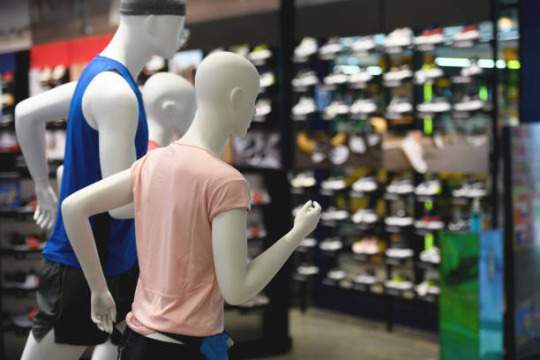
Launching a start-up fashion apparel business in the female fitness apparel niche is indeed a very engaging experience as it combines love for fitness clothing, fashion trends and, sports and business. The ultimate checklist to follow will help you to start the process of creating a profitable line of fitness wear.
Understanding of fitness clothing line

There are three main areas: choosing the best fabric for high performance, fabric weight, focusing on the stability, and adding in such things as the presence of moisture and breathing capability. Similarly everyday the athletic clothing line, the fitness clothing industry also top priority in terms of brand creation, market analysis, and marketing approach focused to the right demographic with keen interest in fitness and having a healthy lifestyle.
1. RESEARCH PLANNING

Understand the Market: Other recommendations include the following: Analyzing trends, target demographic, and players within the industry.
Choose Your Niche: To succeed in this competitive market, it is advisable to choose a niche, whether it is athleisure, performance wear, or sustainable materials.
Business Plan: Complete and submit the following plan as part of your proposal: plan: vision, goals, cost, and promotional plan.
2. PRODUCT DEVELOPMENT

Design Your Apparel: Other aspects of designs that needs to be taken into considerations include The purpose of the designs is to be unique that will appeal to the target audience.
Material Selection: Select materials of the highest quality that can resist wear and tear that often comes with many forms of physical training.
Prototype and Testing: Prototyping is the next step where one has to design and develop the prototypes of the concept and it is crucial to ensure that the gadgets created are functional, comfortable to wear and fashionable.
3. BRANDING AND IDENTITY
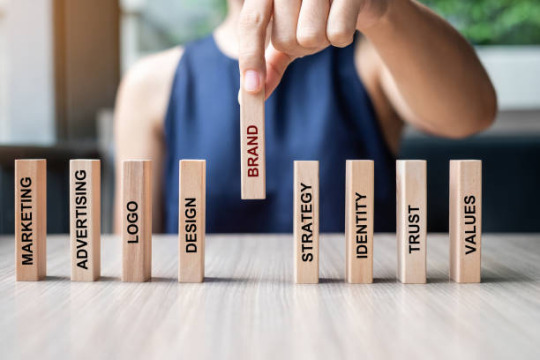
Brand Name and Logo: Namely, create a strong brand name and easily recognizable logo that would comply with the overall image of your brand.
Brand Story: Although a brand story does not necessarily identify neatly and distinctly with the audience, it is a building block by which you can create an emotional appeal as a way of communicating with the audience.
Brand Guidelines: It is imperative that what your brand represents on the Internet should resemble your offline brand image.
4. MANUFACTURING

Find a Manufacturer: Still using the example, try to research on the best manufacturer of the product that you would like to order within your set standard and financial capacity.
Sourcing Materials: Make sure that supplies of the chosen type of materials are constant.
Production Process: Supervise the manufacturing, or other processes, in order to ensure quality is not compromised.
5. LEGALITIES AND LICENSING
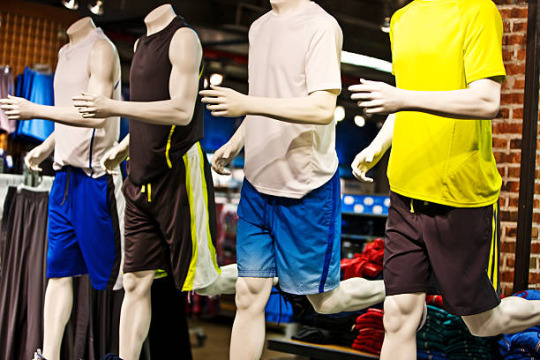
Business Structure: Decide on the right form of business to take (for example, LLC, sole proprietorship and others).
Licenses and Permits: The other important requirement includes; Securing the necessary business licenses and permits.
Trademark and Copyrights: Remember to safeguard your brand legally through the trademarks for the name, logo or any designs.
6. SETTING UP AN ONLINE PRESENCE

E-commerce Platform: Employ a friendly and easy to use e-business software to conduct your business with your customers.
Website Design: The need to create a website that is both attractive and easy to use cannot be overemphasized.
SEO and Content Marketing: Featured snippets must be implemented, and consistent development of content laced with SEO practices to accrue and maintain a loyal customer base should be the major goals.
7. MARKETING STRATEGY AND PROMOTION

Social Media Marketing: In this case, it is crucial to utilize social media platforms as a way of putting your brand out for people to see.
Influencer Collaborations: People follow the recommendations of their favorite personalities, especially in the online space, so use fitness influencers to advertise a new meal plan.
Email Marketing: In reference to the goal of increasing consumers’ purchases and maintaining their loyalty, it is vital to actively use e-mail campaigns to keep the target audience informed and involved.
8. LAUNCH AND GROWTH

Soft Launch: First, launch the product, specifically in a geographical location that will allow the research team to receive feedback before rebranding.
Official Launch: When your product is ready, ensure that it has a glamorous unveiling coupled with the promotions and campaigns.
Customer Feedback: Customers’ opinions can be heard through surveys, interviews or simply having them fill out a short questionnaire.
How Can You Choose the Suitable Fitness Clothing Manufacturer?
Choosing the right for fitness apparel brands and sports and fitness clothing brand by manufacturer involves several critical steps:
Research and Referrals

Always start your search online, and if you’re already connected to people in the fashion industry, ask for recommendations.
Evaluate Experience

In the case of sweaty gym and workout clothes made, the best manufacturers are those with specialization in manufacturing fitness apparel business apparels.
Check Quality Standards
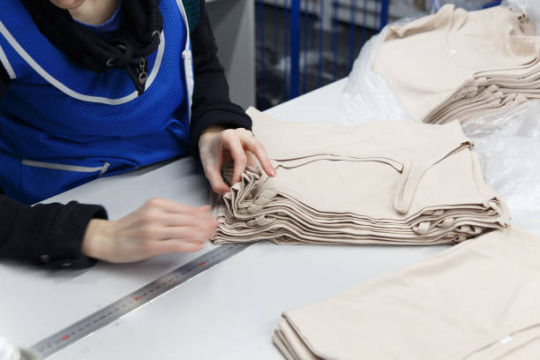
Provide feedback on the quality control mechanisms used by the prospective suppliers and make sample demands.
Communication and Responsiveness

Guarantee that they are articulate and on the same page in terms of time.
Production Capacity and Flexibility
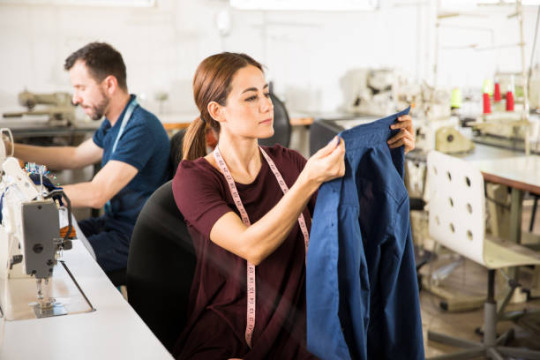
Check if they can fulfil your orders now and their ability to scale up for the future.
Cost and MOQs

You ought to compare costs and minimum order quantities (MOQs) that you will be willing to pay.
Ethical Practices

This means clothing manufacturers ensure that they adhere to the universally accepted ethical manufacturing standards.
FAQs

What is the first step in starting a fitness apparel line?
Ever before buying a product or designing one, a marketer needs to acquire some information in the niche market he intends to operate in.
How do I choose a niche for my fitness apparel line?
Keep it niche such as a sector, a category fitness clothing, or a material such casual clothing such as leisure-wear, sportswear, gym wear or eco-friendly material respectively.
What should be included in a business plan?
Describe your dream from day one, what you want to accomplish, how much money you will spend, solid business plan, how you will sell your product, and your business strategy and plan ROI.
How do I find a reliable manufacturer?
Research manufacturers, request samples, and assess their quality control, capacity, and ethical practices.
What legal requirements should I consider?
Choose a business model or structure to operate legally, Most legal business loans and structures require licenses and permits, and register a business name to safeguard your own business license and brand legally.
How can I build my brand identity?
It is also essential gym clothing brand to have a catchy brand name and logo that is geared towards attracting the intended audience to workout a fitness clothing line, as well as supporting them through a narrative.
What are the key elements of an online presence?
Establish an e-commerce site, create the storefront that consumers will want to frequent, and optimize the corporate website for search engine rankings.
How do I effectively market my fitness apparel line?
Get to market your own your own fitness clothing line, brand and products using social media marketing, brand association with influencers, e-mail marketing, and content quality.
Best advice to start a fitness clothing business
Allocation and the execution of goals and objectives, budget, sales and marketing strategies or the overall business plan is crucial. Brand your campaigns and target your audience through the proper use of social media, well-chosen influencers and online marketing. Marketing has to be properly developed, the web site has to be built in a way that it is easy to navigate, and contain optimized links that will bring buyers to the site. Remain open to change to stay in tune with emerging trends in the industry and target market, and with the opinion of the target customer to design better products and perform better business functions. Some of the tips involve; networking with professional industry players and looking for a mentor in the matter.
Conclusion
To sum up, it is crucial to outline the precise step-by-step plan when launching a fitness apparel line, from the accounting of the saturation in market and choice of the niche to creating the recognizable brand image. Hence, to create a niche fitness brand identity and carve out a space for itself within the cut-throat competition for quality fitness apparel and apparels, one must focus on quality fabrics, unique designs, and targeting the right consumer. And do not forget about using digital tools, addressing the audience through social networks, and being ready to adjust tactics according to tendencies and consumers’ responses. Fitness business or a new fitness clothing line or brand may sound a little blur, but if you are fully committed and employ adequate strategies, you can make a lot of money out of it such as workout clothes, gym apparel line and other new fitness clothing line and activewear manufacturers.
This would mean that undertaking this journey is more of a learning process and an experimentation process. It is crucial to remain connected with other professionals in the industry to be able to find support in the shape of a mentor, as well as always monitor the market situation to be able to manage on threats or even turn them into opportunities to sell workout clothes. To sustain the appreciation of the value these apparels have in the fitness industry or your own fitness clothing line or business and ensuring customer loyalty, one must strive to embrace a winning strategy that complies with the customer-oriented approach into your own fitness brand or fitness clothing line business.
#blog#clothing#fitnessapparel#business#fashion#clothing business idea#how to start a fitness apparel line
2 notes
·
View notes
Text
The Impact of Sneakers on Sports Performance: From Basketball to Running
Sneakers, often referred to as athletic shoes or trainers, play a pivotal role in enhancing sports performance across various disciplines. Whether it's basketball, running, soccer, or any other sport, the right pair of sneakers can make a significant difference in an athlete's performance. In this blog, we will delve into the science behind the impact of sneakers on sports performance, with a particular focus on basketball and running. We will explore the key features that make sneakers performance-enhancing, the importance of proper fit and design, and how advancements in technology are shaping the future of sports footwear.

Section 1: The Science of Sports Footwear
To understand how sneakers influence sports performance, we must first look at the science behind their design. Modern sports footwear is meticulously engineered to optimize athletic ability. Key factors include cushioning, stability, flexibility, and traction. Each of these elements is tailored to the specific demands of the sport, ensuring athletes can perform at their best.
1.1 Cushioning and Impact Absorption In high-impact sports like basketball, sneakers with adequate cushioning are crucial for absorbing the shock and reducing the strain on the joints. Proper cushioning helps prevent injuries like ankle sprains and stress fractures, enabling players to move with confidence and agility on the court.
1.2 Stability and Support For sports that involve rapid changes in direction and lateral movements, such as basketball, sneakers with excellent stability and support are essential. They help maintain balance, reduce the risk of rolling or twisting ankles, and improve overall performance by providing a solid base to push off from.

Section 2: The Impact of Sneakers on Basketball Performance
2.1 Ankle Support and Injury Prevention Basketball players often face the risk of ankle injuries due to sudden stops, starts, and jumps. High-top sneakers with good ankle support have been a traditional choice, offering stability and protection to players. However, low-top models with advanced materials are gaining popularity as they provide adequate support without compromising on mobility.
2.2 Traction for Quick Moves Traction is a critical aspect of basketball sneakers, as it affects an athlete's ability to make quick cuts and change directions. Outsoles with multi-directional patterns and specialized rubber compounds ensure optimal grip on the court, enhancing agility and responsiveness.

Section 3: The Impact of Sneakers on Running Performance
3.1 Cushioning and Energy Return In running, sneakers must strike a balance between providing enough cushioning to protect against impact-related injuries while returning energy to propel the runner forward. Midsole technologies like air cushions, foam compounds, and carbon plates contribute to increased energy return, making sneakers more responsive and efficient.
3.2 Breathability and Weight Lightweight and breathable sneakers are favored by runners as they reduce fatigue and discomfort during long-distance races. Advanced mesh materials and seamless construction improve ventilation, preventing overheating and moisture accumulation.
Section 4: The Future of Sports Footwear
4.1 Data-Driven Design Advancements in technology have enabled sports shoe manufacturers to incorporate data-driven insights into their designs. Motion-capture systems and pressure sensors help analyze athletes' movements and pressure points, leading to personalized footwear that maximizes performance and minimizes injury risk.
4.2 Sustainable Materials and Manufacturing As environmental awareness grows, the sports footwear industry is embracing sustainable materials and manufacturing processes. Recycled plastics, bio-based materials, and eco-friendly production methods are becoming increasingly prevalent, aligning with athletes' desire for responsible and ethical choices.
The impact of sneakers on sports performance cannot be overstated. From providing essential support and cushioning to optimizing traction and energy return, the right pair of sneakers can significantly enhance an athlete's abilities. Whether on the basketball court or the running track, athletes can maximize their potential by choosing performance-oriented footwear. As technology continues to evolve and sustainability takes center stage, the future of sports footwear promises even more exciting innovations for athletes worldwide. So, the next time you lace up your sneakers, remember that your performance is not only a reflection of your training but also a testament to the power of cutting-edge sports footwear.
2 notes
·
View notes
Text
Troubleshooting and Maintenance Guide for Chain Hoists:Core Manual to Ensure Safety and Efficiency in Lifting Operations
As a critical lifting device in industrial operations, chain hoists’ stable performance directly impacts workplace safety and production efficiency. However, prolonged use or improper operation may lead to chain jamming, motor overheating, brake failure, and other malfunctions. This article systematically analyzes the root causes of common issues, offers actionable repair protocols, and underscores the importance of routine maintenance and safety compliance.
Common Fault Phenomena and Troubleshooting Procedures
1. Chain Jamming or Failure to Lift/Lower
Phenomenon: Chain movement obstruction, abnormal noise, or sudden stoppage.
Troubleshooting Steps:
Check chain lubrication: Insufficient lubrication or debris accumulation may cause jamming. Clean and relubricate with dedicated chain lubricant.
Inspect sprocket wear: Replace the sprocket if teeth are deformed or worn.
Calibrate load limiter: If overload protection is falsely triggered, adjust the load sensor or reset the overload protection switch.
2.Brake Failure or Load Drifting
Phenomenon: Hook fails to lock; load drifts downward slowly.
Troubleshooting Steps:
Test brake springs: Replace springs if fatigue deformation or fracture is detected.
Clean brake pads: Oil contamination or dust accumulation may reduce friction. Degrease brake discs and friction plates with anhydrous alcohol.
Verify power voltage: Electromagnetic brake malfunction due to voltage instability. Stabilize power input within rated specifications.
3.Motor Overheating or Abnormal Noise Phenomenon: Excessive motor surface temperature; abnormal noises (e.g., high-pitched friction sounds).
Troubleshooting Steps:
Inspect cooling system: Clear dust from motor ventilation ducts and ensure proper fan operation.
Bearing maintenance: Replenish high-temperature grease if lubrication is insufficient, or replace damaged bearings.
Electrical fault diagnosis: Use a multimeter to test for short circuits in windings and check for loose ground connections.
Critical Maintenance Procedures
Chain Replacement Protocol Steps:1.Release chain tension: Lower the hook to its lowest position and detach the end connecting link.
2.Remove the old chain: Following the manual’s sequence, disassemble the sprocket housing cover and extract the chain.
3.Install the new chain: Ensure proper alignment between chain links and sprocket teeth grooves, then adjust tension to specifications.
Brake System Reassembly
Key Notes: Use only OEM brake pads to prevent mismatched friction coefficients. Manually test brake response after assembly. Perform multiple lifting/lowering cycles under no-load conditions to break in components.
Preventive Maintenance Plan
Daily Inspections
Lubricate chain ONLY when dry: Apply lubricant only to a clean, moisture-free chain using manufacturer-approved grease.
Test brake responsiveness (before each operation): Verify instant braking by engaging/disengaging the hoist unloaded.
Inspect hook for cracks/deformation: Conduct visual inspection and tap testing (listen for abnormal acoustic resonance).
Monthly Comprehensive Maintenance
Disassemble and thoroughly clean sprocket and gearbox assembly to remove debris and residual lubricant.
Calibrate load sensor accuracy to OEM specifications using certified test weights.
Inspect cable insulation for aging/deterioration. Replace immediately if cracking or brittleness is detected.
Critical Safety Protocols
1.Strictly prohibit overloading: Ensure all loads remain within the manufacturer’s rated capacity.
2.Power isolation for maintenance: De-energize, lock out, and tag all energy sources before performing any servicing.
3.No bypassing safety devices: Tampering with overload protectors, limit switches, or safety interlocks is forbidden.
When is Professional Repair Required?
1.Immediately Cease Operation and Contact the Manufacturer if Any of the Following Occur:
2.Motor emits smoke or burnt insulation odor.
3.Structural deformation (e.g., bent components) or cracked weld joints.
4.Control system triggers frequent false alarms.
0 notes
Text
Potassium / Sodium Sulfate Production Line Advanced Extraction Techniques Revealed

Innovations in Potassium / Sodium Sulfate Production
Potassium and sodium sulfate manufacturing has progressed significantly in the last decades. These innovations have led to modern advancements in the production processes while also increasing the quality of the final products. Together these innovations improved production processes efficiency and improved the quality of the final products.
Recent Technological Advancements
Integration of Automation in Production
Automation systems are now considered a cornerstone of any modern production line including potassium and sodium sulfate production line. Automated systems can also allow manufacturers to gain highly controlled and precise production which not only enhances quality consistency but also lowers the chances of human error. Machinery even makes minor adjustments while monitoring in real-time to keep everything at optimal levels during the production process. As a result, it allows for high-quality manufacturing at a much higher throughput and cost efficiency.
Impact of AI on Efficiency and Quality Control
The potassium / sodium sulfate production line has the characteristics of large investment, long process flow, complex operation and maintenance, and high-quality requirement, and artificial intelligence (AI) has become the play of the whole production line of efficiency and quality control. Large-scale data collected from every process associated with production are analyzed through AI algorithms, which recognize patterns and predict challenging circumstances ahead of time. It enables early interventions, so downtime is reduced, and the operation always continues. Also, AI-powered quality control systems ensure batch-to-batch adherence to strict quality standards making products more reliable and also helping in more satisfied customers.
Environmental Considerations
Sustainable Practices in Sulfate Extraction
Modern chemical manufacturing practices have sustainability as a focus. Companies like Aoliande are driving eco-friendly practices to achieve a minimal ecological footprint. This involves minimizing resource use, recycling and reusing water in closed loops, and reducing energy use These practices promote environmental sustainability while contributing to sustainability around the world.
Waste Management and Recycling Processes
Moving away from manganese sulfate salt and relying on effective waste management in place is central to sulfate extraction as this common contaminant in the extraction process. Processes for advanced recycling now exist to recover the by-products created during production. One example is that hydrochloric acid, which is a by-product from the Mannheim process, could be recovered and reused on-site or marketed as a commodity. Not only do these recycling schemes reduce the amount of waste but they also increase economic sustainability by providing new revenue streams from what could be sold as waste.
Detailed Process of Sulfate Extraction
Understanding the detailed process involved in sulfate extraction is essential for optimizing production efficiency and product quality.
Raw Material Sourcing and Preparation
Selection Criteria for High-Quality Raw Materials
There is a direct, proportionate impact of this quality on the process of sulfate extraction. This is why choosing potassium chloride or sodium chloride of high purity is essential. Suppliers are tested by the quality of materials they provide, meeting certain chemical composition specifications. The rigorous selection process lowers impurities which helps to avoid complications in later chemical reactions.
Pre-treatment Methods for Optimal Results
It includes the drying, grinding, or sieving of raw materials to obtain the required size and moisture content of the particles. These processes are essential for homogenizing Feedstock properties so that a survive efficient chemical processes in the furnace can occur. An appropriate pre-treatment lowers energy use and improves reaction kinetics in the actual extraction process.
Equipment and Machinery Utilized in Production Lines
Potassium and Sodium Sulfate Properties Production equipment Potassium and sodium sulfate are widely used in various fields, and therefore they are also widely used in production equipment and machinery. It is also important to know about the types of machinery involved and their maintenance. It is important to know the kind of machines being handled and how to maintain their functionality ensuring smooth workflow.
Essential Machinery for Efficient Production
Overview of Key Equipment Types
Several important devices are used in a common production line of Potassium/sodium sulfate. This includes muffle furnaces for carrying out high-temperature reactions, mixers for blending raw materials into a non-combustible mass, and automatic conveyors for transporting materials from one place to another. Particularly important is the Mannheim furnace which allows the main chemical reactions for sulfate production. Moreover, grading filtration systems are used to guarantee that the last product is pure by eliminating impurities in the response blend.
Maintenance and Longevity Considerations
Maintenance of the production machine plays an important role in keeping it functional and working effectively for a long span. Such as regular checking, removing parts to prevent accumulations of deposits, lubrication of moving components, and replacing any worn-out parts in a timely manner. A proactive maintenance schedule will prevent sudden failings and this minimizes downtime and keeps production running smoothly. Even training the personnel on how to handle and operate the equipment properly increases the longevity of the equipment.
Safety Measures and Standards
Industry Regulations for Safe Operations
In production lines of potassium/sodium sulfate, safe operations are related to compliance with industry regulations. We have every regulation in place for equipment installation, management of hazardous chemicals, waste management, emergency management, etc. Adhering to these standards not only protects the safety of workers but also reduces the environmental hazards of chemical production.
Implementing Safety Protocols
Implementing robust safety measures is an essential part of reducing the danger in production settings. This includes everything from ensuring that facilities are properly outfitted with personal protective equipment (PPE), ensuring that regular safety drills are practiced, and investing in monitoring systems capable of detecting gas leaks and equipment malfunctions. In addition, regular training of the employees helps to develop a safety-conscious culture among them which enhances operational safety.
Aoliande's Role in the Industry and Additional Products

Hebei Aoliande Chemical Equipment Co., Ltd., actively participates in the potassium/sodium sulfate production industry based on quality-oriented equipment manufacturing. It is heavily used in potassium/sodium sulfate production, due to its know-how in producing advanced machinery to fulfill the demands of this industry.
Contribution to Potassium/Sodium Sulfate Production Lines
Expertise and Innovations Offered by Aoliande
Aoliande has become a first-class service provider for potassium/sodium sulfate production lines with advanced technology, professional solutions, and comprehensive service. Using technology and craftsmanship, the company innovates machinery to promote efficiency while maintaining product quality. Their continued development work shows a strong dedication to innovation as they hold a plethora of patents that enhance industry-established processes (Mannheim process, for instance).
Exploring Aoliande's Other Products
Introduction to FRP Filament Winding Machine
Apart from the sulfate production lines, Aoliande supplies more products such as FRP (Fiber Reinforced Plastic) filament winding machines. These machines play an important role in the production of robust composite materials used in industrial sectors including but not limited to construction, automotive, and aerospace sectors. Aoliande strives to innovate in the field of material technology through more precise engineering and rugged architecture, which is clearly reflected by the FRP filament winding machine itself.
https://www.sopplant.com/wp-admin/post.php?post=1794&action=edit
0 notes
Text
Frozen Waffles Market Trends: Technological Advancements Enhancing Product Quality and Shelf Life
The frozen waffles market is undergoing a significant transformation, driven by technological innovations aimed at improving product quality and extending shelf life. These advancements are reshaping manufacturing processes, packaging solutions, and supply chain logistics, ensuring that consumers receive high-quality products with enhanced freshness and convenience.

Advanced Freezing Techniques: Preserving Quality and Freshness
Traditional freezing methods often compromise the texture and taste of frozen waffles due to the formation of large ice crystals. To address this, manufacturers are adopting advanced freezing technologies such as flash freezing and cryogenic freezing. These methods involve rapidly lowering the temperature of the waffles, minimizing ice crystal formation and preserving the product's original texture, flavor, and nutritional value. Such techniques not only enhance the consumer experience but also extend the product's shelf life, reducing food waste and improving inventory management .
Innovative Packaging Solutions: Enhancing Shelf Life and Sustainability
Packaging plays a crucial role in maintaining the quality and extending the shelf life of frozen waffles. Recent innovations include the use of flexible, multi-layered laminated sheets made from materials like plastic, paper, and aluminum foils. These advanced packaging materials provide superior barrier properties against moisture and oxygen, preventing contamination and spoilage .
Moreover, the industry is witnessing a shift towards eco-friendly packaging solutions. Manufacturers are exploring recyclable and biodegradable materials to meet consumer demand for sustainable products. Such initiatives not only contribute to environmental conservation but also appeal to environmentally conscious consumers .
Smart Packaging: Integrating Technology for Quality Assurance
The integration of smart technology into packaging is revolutionizing the frozen waffles market. Battery-free, stretchable, and autonomous smart packaging systems have been developed to monitor real-time food freshness. These systems incorporate gas sensors and Near-Field Communication (NFC) antennas to detect spoilage indicators and trigger the release of active compounds that prevent quality deterioration. Such innovations can extend the shelf life of food products by up to 14 days, ensuring that consumers receive fresh and safe products .
AI and Data Analytics: Driving Product Innovation
Artificial Intelligence (AI) and data analytics are playing a pivotal role in product development within the frozen waffles market. By analyzing consumer preferences, purchasing patterns, and market trends, manufacturers can identify emerging demands, such as the need for gluten-free or high-protein waffles. This data-driven approach enables companies to tailor their product offerings to meet specific dietary needs and preferences, enhancing customer satisfaction and loyalty .
Supply Chain Optimization: Ensuring Quality from Production to Delivery
Technological advancements are also enhancing supply chain logistics for frozen waffles. The use of GPS-tracked vehicles and IoT devices allows for real-time monitoring of product temperature and humidity levels during transportation. This ensures that frozen waffles are maintained at optimal conditions throughout the supply chain, preserving their quality and safety. Additionally, smart technology provides enhanced traceability through blockchain and other distributed ledger technologies, creating an immutable record of a product's journey from production to the consumer .
E-commerce and Online Retail: Expanding Market Reach
The rise of e-commerce and online grocery shopping has significantly impacted the frozen waffles market. Online platforms offer consumers the convenience of purchasing frozen waffles from a variety of brands, with the added benefit of home delivery. Manufacturers are leveraging direct-to-consumer models and partnerships with major e-commerce platforms to expand their market reach and cater to the growing demand for convenient breakfast options .
Conclusion
Technological advancements are at the forefront of transforming the frozen waffles market. From innovative freezing techniques and smart packaging solutions to AI-driven product development and optimized supply chains, these innovations are enhancing product quality, extending shelf life, and meeting evolving consumer demands. As the industry continues to embrace technology, consumers can expect higher-quality, more sustainable, and convenient frozen waffle options in the market.
0 notes
Text
Growth Opportunities in the Industrial Paper Bags Market Through 2030: Key Trends Analyzed
The industrial paper bags market has experienced substantial evolution over the past few decades, primarily driven by increasing environmental awareness and the global push toward sustainable packaging alternatives. These paper bags, commonly used for packaging cement, chemicals, food grains, and various industrial goods, are now seen not only as practical packaging solutions but also as a reflection of corporate responsibility and environmental commitment.

Market Overview
The industrial paper bags market has seen steady growth globally, with a notable shift from plastic to paper in several industries. Key drivers include stringent regulations against plastic usage, rising demand from the construction and agriculture sectors, and growing consumer preference for eco-friendly products. According to various industry reports, the market is projected to grow at a CAGR of over 4% between 2024 and 2030, with Asia-Pacific leading the demand, followed by North America and Europe.
Key Trends Shaping the Market
One of the prominent trends influencing the market is the increased adoption of biodegradable and recyclable materials. Industrial users are increasingly focusing on reducing their carbon footprints, prompting a shift to paper-based alternatives. As a result, manufacturers are investing in developing high-strength paper bags that meet the durability and safety standards previously associated with plastic or woven sacks.
Another important trend is the automation of packaging lines. Industries such as cement and chemicals demand high volumes of packaging material, often under tight timelines. Automated bagging systems that support paper bags without compromising speed or safety are becoming more common, thus boosting the demand for compatible industrial paper bags.
Furthermore, there is an uptick in the customization of paper bags. With brand identity playing a growing role in industrial supply chains, companies are requesting customized printing, branding, and bag configurations. This opens new avenues for paper bag manufacturers who can offer tailored solutions in terms of size, structure, and graphics.
Market Segmentation
The industrial paper bags market can be segmented based on product type, material, end-use industry, and region. The most common product types include sewn open mouth bags, pasted valve bags, and flat bottom bags. Pasted valve bags are particularly popular in the cement and building materials sector due to their excellent sealing capability and ease of filling.
In terms of material, kraft paper dominates the market. Known for its durability and resistance to tearing, kraft paper is ideal for handling heavy and often abrasive industrial materials. Multi-wall paper bags, made from multiple layers of kraft paper, are especially favored for enhanced strength and moisture resistance.
End-use industries that rely heavily on industrial paper bags include cement, chemicals, agriculture, food, and pharmaceuticals. Among these, the cement industry remains the largest consumer, driven by ongoing infrastructure development, especially in emerging economies.
Regional Dynamics
Asia-Pacific holds the largest market share, owing to rapid urbanization, infrastructural development, and a significant manufacturing base in countries like China and India. The region is also experiencing a regulatory shift, with governments encouraging sustainable packaging through policy changes and incentives.
North America and Europe, though mature markets, continue to show positive growth, largely driven by environmental regulations and a growing demand for sustainable supply chain practices. The Middle East and Africa are also emerging as promising markets due to increased construction activities and growing environmental consciousness.
Challenges and Opportunities
Despite its growth, the industrial paper bags market faces several challenges. The primary concern is cost. Compared to plastic or woven alternatives, paper bags can be more expensive, especially when high-performance requirements are involved. In addition, paper bags are susceptible to moisture, which can be problematic in certain industrial settings unless adequately treated or lined.
However, these challenges also create opportunities. Technological innovations in coatings and lamination, the development of hybrid materials, and investment in manufacturing efficiencies can help overcome existing limitations and enhance the competitiveness of paper bags.
Conclusion
The industrial paper bags market is undergoing a significant transformation fueled by environmental concerns, technological innovation, and changing consumer and industrial behavior. While cost and performance barriers remain, the market's growth trajectory is positive, supported by regulatory backing and the broader global movement toward sustainability. Manufacturers that adapt quickly and invest in innovation are likely to lead in this evolving landscape.
0 notes
Text
Industrial Coating Market Overview: Evaluating Growth Driven by Infrastructure Development and Manufacturing Expansion
Introduction
The industrial coating market is undergoing significant transformation, primarily fueled by the twin engines of infrastructure development and manufacturing expansion. As economies across the globe invest in upgrading their public and private infrastructure, demand for high-performance coatings has surged. These coatings not only enhance the aesthetics and durability of industrial structures but also serve critical functions such as corrosion protection, temperature resistance, and chemical shielding. This article delves into the current market landscape, identifies the major growth drivers, and analyzes the evolving trends shaping the future of the industrial coating industry.

Market Overview and Dynamics
The industrial coating market has been steadily growing, supported by increasing demand from end-use industries such as automotive, construction, marine, aerospace, and oil & gas. The global shift toward urbanization and large-scale infrastructure projects in emerging economies like China, India, and Brazil is creating robust demand for protective and functional coatings. In parallel, developed regions such as North America and Europe are also focusing on revamping aging infrastructure, further contributing to market expansion.
The push for energy efficiency and longer lifecycle of assets is also propelling the adoption of advanced coating technologies such as powder coatings, fluoropolymer coatings, and epoxy coatings. These coatings offer superior resistance to environmental stressors and require less maintenance, resulting in long-term cost savings for industries.
Infrastructure Development as a Core Growth Driver
One of the primary market accelerators is the global emphasis on infrastructure development. Mega projects, including highways, bridges, airports, and railways, demand industrial-grade coatings for structural integrity and aesthetic appeal. Government investments under programs like China's Belt and Road Initiative, India’s Smart Cities Mission, and the U.S. Infrastructure Investment and Jobs Act are expected to stimulate coating consumption across construction segments.
Moreover, increasing urbanization is leading to higher demand for residential and commercial buildings, boosting architectural coatings. These coatings not only add visual appeal but also offer protection from UV rays, moisture, and environmental pollutants.
Manufacturing Expansion and Industrial Coating Demand
Parallel to infrastructure growth, the global manufacturing sector is expanding at a steady pace, particularly in Asia-Pacific. Countries like Vietnam, Indonesia, and Bangladesh are emerging as manufacturing hubs, attracting investments in machinery, equipment, and industrial facilities. This expansion naturally requires coatings for machines, production lines, and industrial flooring.
In addition, sectors such as electronics, heavy equipment, and automotive manufacturing are witnessing increased production. This rise fuels demand for specialized coatings that offer thermal insulation, abrasion resistance, and electrostatic discharge protection.
Technological Advancements and Sustainable Solutions
The market is also evolving with the introduction of sustainable and environment-friendly coatings. Waterborne coatings, UV-curable coatings, and low-VOC (Volatile Organic Compounds) formulations are gaining traction as environmental regulations tighten across regions. Manufacturers are investing in R&D to enhance product performance while minimizing ecological impact.
Innovations in nanotechnology, smart coatings, and self-healing coatings are also opening new opportunities. These coatings not only prolong material lifespan but also reduce maintenance costs—key factors driving their adoption in heavy-duty industrial settings.
Challenges and Market Outlook
Despite its positive trajectory, the industrial coating market faces challenges such as fluctuating raw material prices, supply chain disruptions, and compliance with stringent environmental regulations. Nonetheless, growing awareness about surface protection, the expansion of end-use industries, and technological breakthroughs are expected to offset these hurdles.
Looking ahead, the market is poised for robust growth, with Asia-Pacific remaining the dominant region due to its rapid industrialization. North America and Europe will continue to contribute significantly, driven by renovation projects and demand for high-performance, eco-friendly coatings.
Conclusion
The industrial coating market is at the forefront of transformation, fueled by dynamic growth in infrastructure and manufacturing sectors. As global industries seek durable, efficient, and sustainable solutions, the demand for industrial coatings will continue to rise, paving the way for innovation and long-term market potential.
0 notes
Text
How Do IoT Data Loggers Enhance Data Collection?
In the age of digital transformation, collecting and analyzing data has become the backbone of efficient operations across industries. Whether monitoring temperature in a cold storage facility, analyzing vibrations in machinery, or measuring electrical signals in research labs, data loggers play a vital role in recording and preserving data. Among the most commonly used tools in this field are the IoT data logger, digital data logger, and DAQ data acquisition systems.
What is a Data Logger?
A data logger is an electronic instrument designed to record various types of data over time. It typically includes sensors, microcontrollers, memory storage, and software to collect and store information for later use. Data loggers are used in diverse applications—from environmental monitoring and industrial control to logistics and scientific research.
The key benefit of a data logger is its ability to operate autonomously once configured. Users can deploy these devices in remote or hard-to-reach locations where constant human supervision is impractical. They are engineered to log everything from temperature, humidity, and pressure to voltage, current, and vibration.
Understanding the IoT Data Logger
One of the most innovative developments in the world of data logging is the IoT data logger. These devices leverage the power of the Internet of Things to transmit real-time data to cloud-based platforms. Unlike traditional loggers that require manual data retrieval, IoT data loggers provide instant remote access to critical metrics.
This functionality is particularly useful in industries like agriculture, manufacturing, smart cities, and utilities. For example, a smart farm may use IoT data loggers to monitor soil moisture, temperature, and rainfall—enabling automated irrigation systems and real-time alerts. Similarly, in industrial plants, these loggers help monitor equipment conditions and detect anomalies before they lead to costly breakdowns.
IoT data loggers often come with wireless communication features like Wi-Fi, cellular (4G/5G), or LoRaWAN. They are integrated with GPS for location tracking and equipped with dashboards or mobile apps for easy data visualization.
Digital Data Logger: A Reliable Workhorse
A digital data logger is one of the most widely used types of data loggers. These compact devices are designed to measure and store data in digital form, ensuring high accuracy and ease of integration with computers and management systems. Unlike analog data recorders, digital data loggers minimize the chances of human error and offer improved precision.
They are commonly employed in industries where continuous monitoring is crucial—such as pharmaceuticals, food processing, and transportation. For example, in cold chain logistics, digital data loggers are used to monitor the temperature of perishable goods during transit. If the temperature deviates from the allowed range, the logger stores the event and alerts the operator.
Modern digital data loggers come with LCD screens, USB or Bluetooth connectivity, long battery life, and configurable sampling intervals. Their plug-and-play functionality makes them ideal for non-technical users who still require dependable data.
DAQ Data Acquisition Systems: For Complex Data Needs
While digital and IoT data loggers are great for general-purpose monitoring, DAQ data acquisition systems are used for more advanced and high-speed data recording applications. These systems consist of sensors, signal conditioning hardware, analog-to-digital converters, and specialized software that works in tandem to gather, process, and analyze large volumes of data in real time.
DAQ data acquisition systems are frequently used in laboratories, engineering research, aerospace, automotive testing, and energy sectors. For instance, during crash tests in the automotive industry, DAQ systems capture a wide range of sensor data—force, acceleration, pressure, and more—at extremely high speeds.
What sets DAQ systems apart is their ability to handle multiple input channels simultaneously and offer highly customizable configurations. They are typically connected to a PC or an industrial controller, allowing users to visualize and manipulate data through sophisticated software tools like LabVIEW or MATLAB.
Choosing the Right Tool
Choosing between an IoT data logger, digital data logger, and DAQ data acquisition system depends on your specific application needs:
IoT data logger: Best for remote, real-time monitoring where wireless communication is key.
Digital data logger: Ideal for routine environmental or process monitoring with accuracy and ease of use.
DAQ data acquisition: Suited for research and engineering environments where complex, high-speed, multi-signal data is required.
Conclusion
Data logging technologies have evolved to match the ever-growing demand for precision, efficiency, and real-time access. Whether it’s the connectivity of an IoT data logger, the reliability of a digital data logger, or the power and complexity of DAQ data acquisition systems, these tools empower industries to make smarter, faster, and more informed decisions. As technology continues to advance, the future of data logging promises even greater integration, automation, and intelligence.
0 notes
Text
Why IoT Gateway Is Key to Modern Water Management

Water is one of the most critical natural resources for life, agriculture, and industries. With growing demand and climate-related challenges, managing water sustainably is more important than ever. This is where modern technologies like the IoT gateway play a crucial role in bridging traditional systems with real-time, connected water management solutions.
IoT gateways are helping organizations collect, process, and act on water data in ways that were not possible before. In this blog, we’ll explore how an IoT gateway works, its role in sustainable water management, and how it supports various use cases such as IoT tank level monitoring, industrial IoT, and IoT remote monitoring solutions.
What Is an IoT Gateway?
An IoT gateway is a bridge between IoT devices and cloud-based systems or local servers. It gathers data from sensors and devices, processes it locally or forwards it to the cloud for analytics. This reduces latency, improves performance, and enhances data security.
In water systems, the IoT gateway connects sensors monitoring flow, pressure, tank levels, and water quality. It ensures the data is reliable, timely, and actionable, which is vital for smart and sustainable decisions.
Why Water Systems Need an IoT Gateway
Water infrastructure often includes remote or hard to access areas like reservoirs, pumping stations, tanks, and treatment plants. These areas generate huge volumes of data, but without a reliable gateway, this data may not be collected efficiently.
Here’s why using an IoT gateway in water systems is essential:
Real-time data collection from multiple field sensors
Edge processing to filter and analyze data before transmission
Stable connectivity even in remote or rural areas
Integration with SCADA, cloud platforms, and mobile apps
Support for various communication protocols (LoRa, NB-IoT, 4G, Wi-Fi, Ethernet)
By using an IoT gateway, organizations can avoid manual data handling and get access to continuous monitoring and insights.
How IoT Gateway Enables Sustainable Water Management
1. Real-Time Water Monitoring
IoT gateways enable real-time monitoring of key parameters like water flow, consumption, tank levels, and leakage. When integrated with IoT tank level monitoring systems, they help ensure that tanks are neither underfilled nor overflowing, saving water and energy.
With real-time alerts, water managers can detect unusual consumption patterns or leaks early, reducing waste and improving system efficiency.
2. Water Quality Tracking
Maintaining water quality is crucial for both drinking and industrial use. Sensors that measure parameters such as pH, turbidity, TDS, and chlorine levels can feed data to the IoT gateway. The gateway then transmits this data securely to monitoring systems for review.
This enables faster decision-making and ensures that contaminated water doesn't reach consumers.
3. Smart Irrigation Control
In agriculture, sustainable water use is a major concern. With IoT gateways, smart irrigation systems can operate based on soil moisture levels, weather forecasts, and crop type. The gateway gathers and processes this data to automate irrigation, reducing overwatering and saving valuable resources.
This setup also allows integration with IoT device monitoring tools that track the health of irrigation pumps, valves, and field sensors.
Integration with Industrial IoT
Water usage in industries can be intense and unpredictable. An IoT gateway helps bring water monitoring into the world of industrial IoT. It enables factories and processing plants to:
Track water usage by process or department
Automate usage reporting and billing
Monitor water pressure and temperature in real time
Ensure compliance with environmental regulations
For example, a manufacturing plant using a large volume of water can set usage limits, detect equipment malfunctions, and optimize water recycling systems through the gateway’s continuous monitoring features.
Energy Efficiency in Water Operations
Sustainable water management also means using less energy. Water pumping and treatment facilities consume significant amounts of electricity. By using an IoT gateway, facilities can track energy consumption, detect inefficiencies, and make adjustments to save power.
Gateways can combine data from energy meters and water pumps, enabling operators to correlate energy use with water output. This insight helps reduce carbon emissions and operating costs.
Remote Monitoring and Predictive Maintenance
Thanks to the IoT Remote Monitoring Solution, water systems no longer need manual checks. The IoT gateway makes it possible to track pumps, tanks, pipelines, and filtration units from a central dashboard.
If a motor is running hotter than usual or if water levels fall below a threshold, the gateway triggers alerts to maintenance teams. This helps avoid failures and reduces downtime.
Moreover, predictive maintenance becomes easier when historical data is collected through the gateway and analyzed over time. You can know when to service equipment before it breaks down.
Scalable and Secure Water Management
Scalability is another benefit of using an IoT gateway. Whether you’re managing 10 or 10,000 sensors, the gateway acts as a middle layer that handles data efficiently.
Also, gateways support secure data transmission, ensuring that sensitive water usage or operational data is not exposed to threats. Most modern gateways include:
Data encryption
Authentication protocols
OTA (Over-the-Air) updates
Firewall support
These features are crucial for secure IoT device management and ensure long-term reliability of the system.
Use Case: Smart City Water Network
In a smart city project, municipal bodies can use IoT gateways to connect distributed sensors across water tanks, treatment plants, pipelines, and public taps. The gateway aggregates all the data, allowing for:
Leak detection in underground pipelines
Fair billing through usage-based metering
Reducing non-revenue water
Ensuring 24x7 supply in underserved areas
This system can work alongside IoT tank level monitoring to prevent overflow in urban storage tanks.
Benefits of Using IoT Gateway in Water Management
Water is one of the most critical natural resources for life, agriculture, and industries. With growing demand and climate-related challenges, managing water sustainably is more important than ever. This is where modern technologies like the IoT gateway play a crucial role in bridging traditional systems with real-time, connected water management solutions.
IoT gateways are helping organizations collect, process, and act on water data in ways that were not possible before. In this blog, we’ll explore how an IoT gateway works, its role in sustainable water management, and how it supports various use cases such as IoT tank level monitoring, industrial IoT, and IoT remote monitoring solutions.
What Is an IoT Gateway?
An IoT gateway is a bridge between IoT devices and cloud-based systems or local servers. It gathers data from sensors and devices, processes it locally or forwards it to the cloud for analytics. This reduces latency, improves performance, and enhances data security.
In water systems, the IoT gateway connects sensors monitoring flow, pressure, tank levels, and water quality. It ensures the data is reliable, timely, and actionable, which is vital for smart and sustainable decisions.
Why Water Systems Need an IoT Gateway
Water infrastructure often includes remote or hard to access areas like reservoirs, pumping stations, tanks, and treatment plants. These areas generate huge volumes of data, but without a reliable gateway, this data may not be collected efficiently.
Here’s why using an IoT gateway in water systems is essential:
Real-time data collection from multiple field sensors
Edge processing to filter and analyze data before transmission
Stable connectivity even in remote or rural areas
Integration with SCADA, cloud platforms, and mobile apps
Support for various communication protocols (LoRa, NB-IoT, 4G, Wi-Fi, Ethernet)
By using an IoT gateway, organizations can avoid manual data handling and get access to continuous monitoring and insights.
How IoT Gateway Enables Sustainable Water Management
1. Real-Time Water Monitoring
IoT gateways enable real-time monitoring of key parameters like water flow, consumption, tank levels, and leakage. When integrated withIoT tank level monitoring systems, they help ensure that tanks are neither underfilled nor overflowing, saving water and energy.
With real-time alerts, water managers can detect unusual consumption patterns or leaks early, reducing waste and improving system efficiency.
2. Water Quality Tracking
Maintaining water quality is crucial for both drinking and industrial use. Sensors that measure parameters such as pH, turbidity, TDS, and chlorine levels can feed data to the IoT gateway. The gateway then transmits this data securely to monitoring systems for review.
This enables faster decision-making and ensures that contaminated water doesn't reach consumers.
3. Smart Irrigation Control
In agriculture, sustainable water use is a major concern. With IoT gateways, smart irrigation systems can operate based on soil moisture levels, weather forecasts, and crop type. The gateway gathers and processes this data to automate irrigation, reducing overwatering and saving valuable resources.
This setup also allows integration with IoT device monitoring tools that track the health of irrigation pumps, valves, and field sensors.
Integration with Industrial IoT
Water usage in industries can be intense and unpredictable. An IoT gateway helps bring water monitoring into the world of industrial IoT. It enables factories and processing plants to:
Track water usage by process or department
Automate usage reporting and billing
Monitor water pressure and temperature in real time
Ensure compliance with environmental regulations
For example, a manufacturing plant using a large volume of water can set usage limits, detect equipment malfunctions, and optimize water recycling systems through the gateway’s continuous monitoring features.
Energy Efficiency in Water Operations
Sustainable water management also means using less energy. Water pumping and treatment facilities consume significant amounts of electricity. By using an IoT gateway, facilities can track energy consumption, detect inefficiencies, and make adjustments to save power.
Gateways can combine data from energy meters and water pumps, enabling operators to correlate energy use with water output. This insight helps reduce carbon emissions and operating costs.
Remote Monitoring and Predictive Maintenance
Thanks to the IoT Remote Monitoring Solution, water systems no longer need manual checks. The IoT gateway makes it possible to track pumps, tanks, pipelines, and filtration units from a central dashboard.
If a motor is running hotter than usual or if water levels fall below a threshold, the gateway triggers alerts to maintenance teams. This helps avoid failures and reduces downtime.
Moreover, predictive maintenance becomes easier when historical data is collected through the gateway and analyzed over time. You can know when to service equipment before it breaks down.
Scalable and Secure Water Management
Scalability is another benefit of using an IoT gateway. Whether you’re managing 10 or 10,000 sensors, the gateway acts as a middle layer that handles data efficiently.
Also, gateways support secure data transmission, ensuring that sensitive water usage or operational data is not exposed to threats. Most modern gateways include:
Data encryption
Authentication protocols
OTA (Over-the-Air) updates
Firewall support
These features are crucial for secure IoT device management and ensure long-term reliability of the system.
Use Case: Smart City Water Network
In a smart city project, municipal bodies can use IoT gateways to connect distributed sensors across water tanks, treatment plants, pipelines, and public taps. The gateway aggregates all the data, allowing for:
Leak detection in underground pipelines
Fair billing through usage-based metering
Reducing non-revenue water
Ensuring 24x7 supply in underserved areas
This system can work alongside IoT tank level monitoring to prevent overflow in urban storage tanks.
Benefits of Using an IoT Gateway in Water Management
Real-time Monitoring:
Allows operators to track water systems in real time, identifying issues like leaks or overuse quickly.
Helps reduce waste and avoid expensive repairs by addressing problems early.
Faster Decision Making:
Uses edge computing to process data locally and make quick decisions.
Can trigger actions like turning off pumps or sending alerts about equipment issues immediately.
Support for Different Devices:
Converts different communication signals into a unified format, making it easier to connect various devices and sensors.
Allows easy system growth by adding more sensors or devices as needed.
Remote Monitoring:
Enables operators to monitor water systems from anywhere without needing to be on-site.
Saves time and resources, especially for large-scale systems like city water networks or agricultural irrigation.
Predicting Problems Before They Happen:
Analyzes data to spot early signs of equipment issues, like malfunctioning pumps or pipes.
Helps fix problems before they cause significant damage, reducing downtime and repair costs.
Secure Communication:
Ensures that data shared between devices and the central system is encrypted and protected.
Keeps data safe from unauthorized access or hacking, maintaining system trust and security.
Easily Scalable:
Makes it simple to add new sensors or devices as the water system expands.
Ensures the system remains reliable and efficient even as it grows.
Final Thoughts
As water scarcity continues to grow globally, adopting technology for better water use is no longer optional, it’s necessary. The IoT gateway acts as a central piece in the puzzle of sustainable water management, making data-driven decisions possible for agriculture, cities, and industries alike.
By enabling seamlessIoT device monitoring, supporting industrial IoT applications, and integrating with IoT remote monitoring solutions, IoT gateways are transforming how we manage water systems.
Whether you're a municipal planner, a farmer, or an industrial operator, investing in a reliable IoT gateway is a step toward smarter, more sustainable water use.
Final Thoughts
As water scarcity continues to grow globally, adopting technology for better water use is no longer optional, it’s necessary. The IoT gateway acts as a central piece in the puzzle of sustainable water management, making data-driven decisions possible for agriculture, cities, and industries alike.
By enabling seamless IoT device monitoring, supporting industrial IoT applications, and integrating with IoT remote monitoring solutions, IoT gateways are transforming how we manage water systems.
Whether you're a municipal planner, a farmer, or an industrial operator, investing in a reliable IoT gateway is a step toward smarter, more sustainable water use.
0 notes
Text
Conditioning Polymers Market: Key Drivers and Trends Shaping the Industry’s Future Growth
The conditioning polymers market is a dynamic and expanding sector driven by a variety of factors, primarily linked to its applications in industries such as water treatment, personal care, agriculture, and pharmaceuticals. These polymers, commonly known for their ability to enhance product stability, performance, and efficiency, play a crucial role in various formulations and processes. As industrial requirements evolve, the demand for conditioning polymers continues to surge. This article explores the key drivers behind the growth of the conditioning polymers market, analyzing factors such as technological advancements, environmental concerns, and shifting consumer preferences.

Technological Advancements
One of the primary drivers of the conditioning polymers market is the ongoing innovation in polymer technologies. The development of more efficient, sustainable, and versatile conditioning agents is fostering the expansion of their use across multiple sectors. New forms of conditioning polymers with improved properties, such as better biodegradability, higher effectiveness at lower concentrations, and greater stability in extreme conditions, are contributing to the market's growth.
In water treatment, for example, advancements in conditioning polymer formulations have led to the creation of more effective flocculants and coagulants. These polymers help in the removal of suspended solids and impurities from water, thus contributing to cleaner, safer water. Moreover, improvements in polymerization techniques are enabling manufacturers to tailor the molecular structure of conditioning polymers to meet specific requirements for a range of applications.
Growing Demand for Water Treatment
The increasing global emphasis on water quality and the demand for clean, safe drinking water are significant drivers for the conditioning polymers market. As industrialization accelerates and water scarcity becomes an even more pressing issue, the need for efficient water treatment systems has grown. Conditioning polymers, particularly flocculants, coagulants, and dispersants, are vital in the water purification process. These materials help to treat wastewater, remove pollutants, and improve the clarity and quality of water for industrial use or consumption.
With environmental regulations becoming stricter, governments and organizations are implementing more stringent standards for water quality. This regulatory pressure has led to the increased use of conditioning polymers, as they are essential in meeting these higher standards. As such, the growth in water treatment applications is expected to significantly contribute to the demand for conditioning polymers in the coming years.
Increasing Use in Personal Care and Cosmetics
Another key factor driving the conditioning polymers market is their widespread use in the personal care and cosmetics industry. These polymers are commonly used in shampoos, conditioners, lotions, and creams due to their ability to improve the texture, stability, and sensory appeal of cosmetic formulations. Conditioning polymers, such as polyquaternium, are used to enhance hair and skin feel, ensuring that products provide long-lasting moisturizing effects and smoothness.
The growing consumer demand for high-quality personal care products, particularly those with multifunctional benefits, is propelling the growth of conditioning polymers in this sector. As consumers become more discerning about the products they use, they increasingly seek formulations that offer enhanced performance without sacrificing safety. Moreover, the rising awareness of the importance of eco-friendly and natural ingredients in cosmetic products has led to the development of biodegradable and sustainable conditioning polymers, further boosting their adoption.
Focus on Sustainability
Sustainability is one of the most significant drivers of the conditioning polymers market. The increasing environmental concerns related to plastic waste, water pollution, and resource depletion are prompting industries to shift towards more sustainable and eco-friendly solutions. In response to this, manufacturers are focusing on the development of biodegradable and renewable conditioning polymers. These sustainable polymers are derived from natural sources, such as plant-based materials, and are designed to break down more easily in the environment compared to traditional petroleum-based polymers.
The adoption of sustainable materials is not limited to the personal care industry; it is also gaining momentum in agriculture and industrial applications. As companies strive to reduce their carbon footprint and adhere to stringent environmental regulations, the demand for sustainable conditioning polymers continues to rise.
Expanding Agricultural Applications
The agriculture industry is another significant driver for the conditioning polymers market. Polymers are used in agricultural formulations to improve the efficiency of fertilizers, pesticides, and herbicides. Conditioning polymers enhance the effectiveness of these products by controlling the release rate, improving soil structure, and enhancing water retention. This is particularly important in regions with arid climates or where water conservation is a critical issue.
As the global population continues to grow, the demand for food production is increasing. This has led to an increased need for advanced agricultural techniques, which often involve the use of conditioning polymers. These polymers not only enhance crop yields but also improve soil health and reduce the environmental impact of agricultural practices, thus contributing to more sustainable farming practices.
Regulatory Support and Standards
Governments and international organizations are also playing a crucial role in driving the conditioning polymers market by implementing regulations and standards that favor the use of these materials. In sectors like water treatment and personal care, regulatory agencies are setting higher standards for product quality and environmental impact. This creates a favorable environment for conditioning polymers, which help industries comply with these regulations while improving their processes and products.
For instance, in water treatment, regulatory bodies are enforcing stricter rules on the use of chemicals that could harm the environment. As a result, conditioning polymers are being used more frequently as alternatives to traditional, harmful chemicals. Similarly, in the personal care industry, regulations regarding product safety and environmental sustainability are pushing manufacturers toward using conditioning polymers that meet these higher standards.
Conclusion
The conditioning polymers market is experiencing significant growth due to a combination of technological advancements, growing demand in water treatment, and the increasing use of these materials in personal care, agriculture, and industrial applications. As industries strive for more sustainable, effective, and environmentally friendly solutions, conditioning polymers are playing a crucial role in meeting these demands. Furthermore, the regulatory support for eco-friendly materials is expected to accelerate market growth in the coming years. With continued innovation and increasing adoption across diverse sectors, the conditioning polymers market is poised to remain a key component of various industries worldwide.
0 notes
Text

Medical Devices Exporter - Importer India – Max Worldwide Logistics
With the modern global healthcare system, the flow of medical devices across borders has become more important than ever before. With increasing demand for quality healthcare products, there is a growing need for effective, reliable, and compliant logistics services. India, with its robust manufacturing sector and growing presence in the medical technology arena, Max Worldwide Logistics has become a key player in Medical devices importer and exporter in India. In such a scenario, Max Worldwide Logistics is a trusted and capable ally, providing complete logistics solutions specially designed for the medical devices industry.
India's medical device industry has witnessed unprecedented growth over the past decade. With rising investments, government patronage, and an emphasis on innovation and quality manufacturing, Indian manufacturers of medical devices are entering world markets with confidence. On the opposite side, hospitals, distributors, and Indian healthcare providers import various advanced medical equipment and consumables to supply domestic demand. This dynamic two-way trade necessitates not just good supply chain coordination but also rigid compliance with international regulatory practices, temperature management, and safety standards. This is where Max Worldwide Logistics steps in.
Max Worldwide Logistics, as a top logistics partner for Indian exporters and importers of medical devices, understands the sophisticated and highly regulated nature of this business. From handling customs documents to facilitating safe and timely delivery of sensitive and high-value medical devices, the company provides an end-to-end range of services intended to address industry-specific requirements. With its trained professionals, it works in close coordination with customers to provide seamless transportation across borders with minimum delays, less cost, and in compliance at all stages.
One of the strongest points of Max Worldwide Logistics is the capacity to handle the entire end-to-end logistics process in exports and imports. For Indian manufacturers planning to export medical devices to Europe, the United States, the Middle East, or Southeast Asia, the company offers expert advice on export documentation, packaging rules, and global shipping regulations. They also help secure certifications, like CE Marking or FDA clearance, that are typically necessary to enter overseas markets. With their large international network of freight carriers and logistics partners, Max Worldwide Logistics provides the assurance that shipments will be delivered safely and on time.
On the import side, Max Worldwide Logistics is also competent. Most Indian hospitals, laboratories, and diagnostic centers bring in state-of-the-art devices such as MRI machines, CT scanners, surgical equipment, and laboratory analyzers. These products need to be handled with care, kept within a certain temperature range, and cleared through government agencies. Max Worldwide Logistics bears the burden of handling all the intricacies of importing medical devices, such as customs clearance, HS code classification, and meeting India's Medical Device Rules. Their proactive nature keeps expensive delays at bay and makes sure that medical suppliers receive access to the equipment they require uninterrupted.
In an industry where timing and product integrity are of essence, Max Worldwide Logistics has invested heavily in infrastructures with specialization. Their buildings feature temperature-controlled warehouses, secure packaging units, and GPS-based tracking systems for real-time visibility of consignments. This is particularly important for delicate products like diagnostic tests, implants, and hand-held devices, which are easily damaged through exposure to heat, moisture, or rough handling. Through Max Worldwide Logistics, clients can be assured that all possible precautions are being taken to safeguard the integrity and quality of their medical devices during the journey.
Furthermore, Max Worldwide Logistics is aware that various regions possess unique import-export standards, which constantly shift. They maintain abreast of regulatory developments in key markets such as the US, UK, EU, Middle East, and Southeast Asia so clients stay informed and compliant. This is especially useful to small and medium-sized manufacturers who lack the resources within their organization to deal with international compliance independently.
The other reason for the consideration of Max Worldwide Logistics as a premier logistics solution provider in the medical device industry is the customer-oriented philosophy. Max Worldwide Logistics holds the view that long-term relations with customers can be formed on a foundation of trust, clarity, and efficacy. Max Worldwide Logistics provides tailor-made logistic solutions depending on the individual needs of each customer—be it large-scale export of surgical consumables or import of one high-cost diagnostic device. Their assistance doesn't stop with delivery of shipment; they also help with reporting after delivery, storage of documentation, and tracking of inventory for repeat shipments.
While sustainability is a major issue on the minds of companies around the world, Max Worldwide Logistics is doing its part as well. They are streamlining routes, eliminating excess packaging waste, and utilizing green logistics partners to ensure the lowest possible carbon footprint from shipping. This aligns with the values of many medical device companies and healthcare organizations that are keen on minimizing their carbon footprint while ensuring operational excellence.
The success of Max Worldwide Logistics in the export and import of medical devices also lies in their robust network of major ports, airports, and customs locations within India. Whether the export or import is being dispatched from Mumbai, Chennai, Delhi, or Bengaluru, or imported from New York, Frankfurt, or Dubai, their operations team coordinates with smooth efficiency and minimal dwell times. This national and international reach is paramount in today's time-sensitive medical logistics environment.
Apart from their standard logistics services, Max Worldwide Logistics provides insightful consulting assistance to first-time international trade clients. This involves product classification advice, trade finance documentation, INCOTERMS, risk management, and insurance. Their consultative model enables companies, particularly SMEs and startups, to enter the global medical devices market with confidence and clarity.
In summary, the export and import of medical devices require a logistics company that not only knows the technical and regulatory needs but also the urgency of on-time delivery. Max Worldwide Logistics has been that company. With its expertise, worldwide network, and customer-first philosophy, the company is assisting Indian manufacturers to reach further internationally and assisting importers in delivering the newest medical technologies to patients in India. In the process, they are not merely transporting goods—they are making healthcare improved globally.
If you are a medical devices company wanting to ship abroad, or a hospital wanting to receive lifesaving devices, then Max Worldwide Logistics is your choice partner in India. Their professionalism, reliability, and commitment earn them a reputation as a top medical devices logistics provider.
#Medical Devices Exporter - Importer India#Top Medical Devices Exporter - Importer India#Best Medical Devices Exporter - Importer India
0 notes
Text
Best Food Testing Equipment in Chennai
Food testing equipment plays a vital role in ensuring the quality, safety, and regulatory compliance of food products. These machines are designed to detect contaminants, analyze nutritional content, and monitor shelf life. From microbiological testing and pesticide residue detection to moisture analysis and pH testing, this equipment helps food manufacturers maintain high safety standards. As global food safety regulations tighten, the demand for advanced testing equipment has increased across sectors such as dairy, bakery, beverages, packaged foods, and meat processing industries. Modern food testing equipment comes equipped with precise sensors, user-friendly interfaces, and digital integration for real-time results and data tracking. Instruments such as gas chromatographs, spectrophotometers, and food analyzers offer detailed insights into chemical compositions. Technologies like rapid test kits and portable food analyzers also support on-site testing, which is especially beneficial for food inspectors and quality assurance teams. These tools not only help in early detection of adulteration and contamination but also ensure that food items meet the nutritional labeling claims made by manufacturers. Indian Trade Bird offers a wide range of food testing equipment suited for various industrial needs. The platform features products from reliable suppliers known for innovation and quality assurance. Whether it's for lab-scale testing or high-throughput industrial applications, buyers can explore equipment tailored for specific parameters like moisture, texture, flavor, and chemical residues. With its streamlined product listings and vendor support, Indian Trade Bird serves as a one-stop marketplace for companies seeking efficient, accurate, and affordable food testing solutions.
For more Details Click Here: https://www.indiantradebird.com/product/food-testing-equipment

0 notes